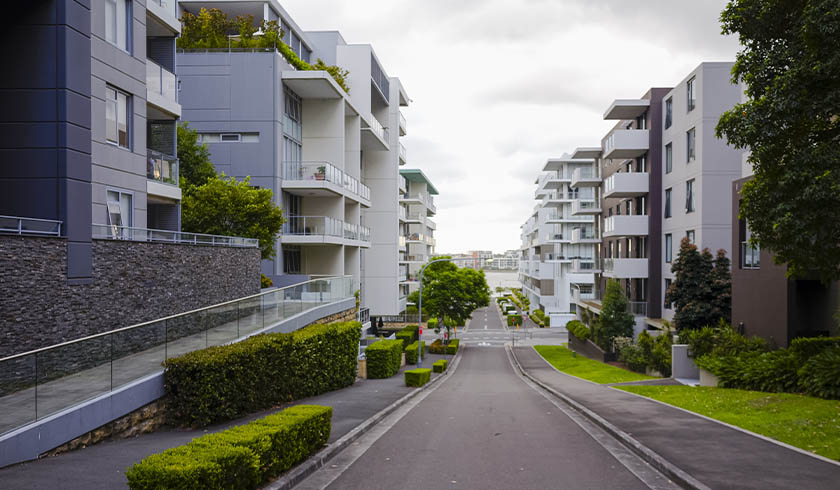Market indicators point to overall improvement post-COVID
Australia’s housing market continued along a recovery trend through November, with CoreLogic’s national index recording a second consecutive monthly rise in November.

According to CoreLogic’s latest Hedonic Home Value Index, released 1 December 2020, with dwelling values up 0.8 per cent over the month. The new recovery trend follows a 2.1 per cent drop in Australian home values between April and September.
CoreLogic’s head of research, Tim Lawless, said that if the current growth trend persists, the national home value index may surpass pre-COVID levels in early 2021.
“The national home value index is still seven-tenths of a per cent below the level recorded in March, but if housing values continue to rise at the current pace, we could see a recovery from the COVID downturn as early as January or February next year.
According to CoreLogic, the lift in housing values comes with a range of other indicators that points to a further improvement in the property market.
For one, inventory levels remain low across Australia, favouring sellers over buyers. CoreLogic found that the number of properties advertised for sale remains 20 per cent lower than this time last year, and 24 per cent below the five-year average. Total listing numbers are low despite a sharp rise in fresh stock being added to the market.
The spring period saw a 42 per cent rise in the number of new listings added to the market nationally, while the total number of listings held firm (-0.6 per cent). This reflects a strong rate of absorption as prospective buyers continue to outnumber newly advertised supply additions, according to CoreLogic.
Further, the number of settled sales has held reasonably firm since July, with rising sales activity outside of Victoria offsetting the sharp drop in Victorian home sales caused by the recent lockdown period.
Nationally, CoreLogic’s settled sales estimates over the past three months were about 1 per cent higher than the same period last year. This is partially due to strong performance in regional areas, where buyer activity has seen a more significant lift than their capital city counterparts, the report noted.
Auction markets have strengthened as well, with November clearance rates holding around 70 per cent, well above the decade average of 61 per cent.
“The strength in auction clearance rates comes as the number of auctions is expected to see a further lift in the first two weeks of December. This will provide a timely test of the market depth prior to the seasonal slowdown through late December and January.”
Private treaty measures are also tightening, reflecting a market that is rebalancing towards vendors over buyers. The median selling time has reduced from 57 days in June to 42 days in November, and discount rates have reduced from 3.9 per cent in April to 2.8 per cent in November.
According to Mr Lawless, “Low advertised stock levels, together with a rising number of active buyers, is creating a renewed sense of urgency in the market.”
“Buyer demand is mostly being fueled by a surge in owner-occupiers rather than investors, looking to take advantage of historically low interest rates, generous government incentives and an increased state of normality.”
Moving forward, record-low interest rates are one of the primary factors supporting a lift in buyer numbers, CoreLogic said.
“Improving economic conditions and containment of the virus have lifted consumer spirits to higher than pre-COVID levels. State government incentives, including changes to stamp duty and additional building grants, are also supporting demand.”
Rental market
Rental conditions continued to diverge through November, according to CoreLogic. Capital city house rents were 0.7 per cent higher in November, while unit rents were down -0.6 per cent. The monthly data follows a now well established trend where house rents have shown a more positive trajectory than unit rents since the onset of COVID.
Across the combined capitals, unit rents have fallen by -5.4 per cent since March while house rents have increased by 1.1 per cent.
Most of the weakness in rental market conditions is driven by Melbourne and Sydney where unit rents are -6.6 per cent and -7.6 per cent lower, respectively, since March, CoreLogic found.
“Every capital city has shown this trend, where house rents outperform unit rents, to varying degrees, but the divergence is most pronounced in Sydney and Melbourne where tenancy demand is more reliant on overseas migration, and supply levels were already high prior to COVID,” the report noted.
In contrast, Perth and Darwin are showing the tightest rental markets following years of weak rental conditions and little in the way of new rental additions to the market.
House rents across Perth have surged by 6.6 per cent since March, while Darwin has increased by 6.1 per cent. Unit rents are also rising in these capital cities, up 3.9 per cent and 5.3 per cent, respectively.
Meanwhile, Hobart recorded a large drop in rents, following a multi-year surge in rents prior to COVID. Although Hobart rents remain lower relative to March, the November data shows a 1.0 per cent rise in both house and unit rental rates.
“This may be an early sign that rental markets are tightening as state borders reopen and labour market conditions improve,” according to the report.
“As labour markets tighten and state borders reopen, rental markets are likely to firm. However, in Sydney and Melbourne, where temporary migrants from overseas comprise a large part of inner city rental demand, an improvement in rental conditions will be more dependent on international borders reopening.”
Looking ahead, investor numbers could become higher in 2021 with prospects for capital gain becoming firmer and more rental dwellings showing the potential for positive cash flow.
“Historically, we have seen investor demand mostly concentrated within the largest capital cities; however, with lower price points, higher yields and arguably better prospects for capital gains, the smaller capitals and regional centres may attract more investment attention in 2021.”
